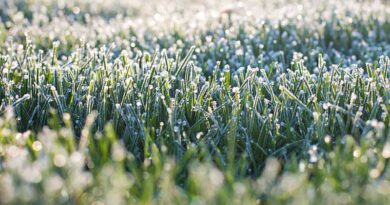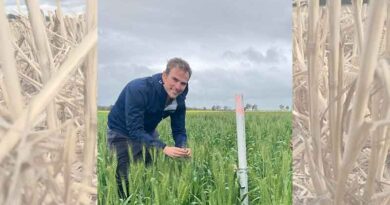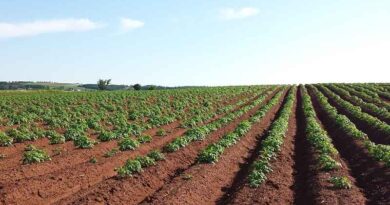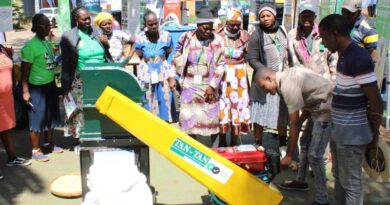3 Ways to Identify and Harvest Frost Bitten Crops
25 September 2022, US: Frost, that localized phenomenon that can be so destructive in spring. The 2022 season has been a particularly challenging one for many parts of Australia. Coming into September, susceptible crops can be severely affected by frost. Being able to identify damage sooner rather than later will help make better decisions to recoup as much of your lost profits as possible.
Capturing accurate temperature information is a key to early detection of frost damage in crops. Plant surfaces cool more quickly than the surrounding air, so often air temperature is not an accurate determination as to what exactly is occurring in the canopy. The best method of temperature logging is to use an accurate temperature measurement tool placed at the height of the crop canopy. The Bureau of Meteorology (BOM) uses what is called a Stevenson Screen to measure temperature. The screen is raised so that the thermometer is 1.2m above the surface, and hence is not giving you a clear picture as to what is going on in your crop. A general rule of thumb is that the canopy temperature is approximately 1.5 – 2.5°C lower than the Stevenson Screen temperature during a frost event.
*Note it is important to monitor air or crop canopy temperature closely as frost occurs on clear nights in early spring when the air temperature drops to 2°C or less.
If you suspect a frost event has occurred in your canopy and the crop is between stem elongation and grain fill it is wise to inspect the crops as early as possible. Start with any paddocks which are known to be high risk, check low lying areas and light soil types first before inspecting the rest of the paddock. Ensure a wide area of the paddock is inspected as frost events can be highly variable throughout the paddock. Monitor the same high risk areas over the coming days to check for signs of frost damage.
*Note frost symptoms may not be obvious for 5-7 days after the frost event.
What to look for?
When inspecting individual plants, check the developing heads, the nature of the frost damage depends on the plant development stage when the frost occurs. Crop damage from frost may occur at any stage of development but is most damaging at or around flowering. When looking for damage a magnifying glass and knife are helpful tools in identifying damaged heads, flowers or stems.
Frost at flowering
Frosted anthers typically white in colour, will turn a dull brown if affected by frost. The ovaries will appear shriveled as no grain is being produced and the head may have bleached florets.
Grain; Frosted grain at the milk stage will turn from its typical white colour to a brown and crumpled appearance. Frosted grain at the milk stage will appear spongy, and brown in appearance and you will not be able to squeeze the milk out of the grain.
Stem frost
A pale green or white ring will occur on the stem below the head or between the internodes. The frost affected area may turn white or brown and the heads may bend over.
If you suspect there is any frost damage in the paddock, call your local agronomist and discuss the next steps. It is important to get a clear understanding of the level of damage that has occurred and the likely yield loss. This will help you manage the next steps when considering alternate options, cutting, harvest, manuring or grazing are all options but without knowing the full extent of the damage the best decision may not be obvious. I always like to leave a test strip in a crop that does not reach harvest, just to check you have made the right decision.
Finally, ensure that any paddocks more severely affected than others are logged in your crop planning software, by doing this it will help you make more informed decisions of what and when to plant in high risk paddocks in coming seasons. For more information and help identifying frost affected crops the Grains Research and Development Corporation (GRDC) has put together a Frost Identification Guide for Cereals.
Also Read: Corteva Agriscience brings its Climate Positive Leaders Program to India
(For Latest Agriculture News & Updates, follow Krishak Jagat on Google News)















